Olympic Stadium - Hello, Our Stadium 国立競技場
|
|
|
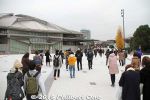
The new Olympic Stadium or "National Stadium" (Kokuritsu Kyogijo) was completed in Nov. 2019 and an opening event for the public called "Hello, Our Stadium" was held on Dec. 21, 2019.From Sendagaya Station, we could take a short cut past this Tokyo Metropolitan Gymnasium to the stadium.
|
|
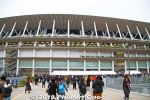
Approaching the Olympic Stadium. The white tent is where we had to show our tickets.
|
|
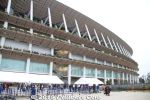
Stadium gates opened at 2 pm, stadium seating opened at 4:30 pm, and the program started at 6:30 pm. Cold, overcast day, but fortunately, it didn't rain.
|
|
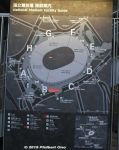
The stadium grounds has four gates (Sendagaya Gate, Gaien Gate, etc.) from the direction of train/subway stations. This map shows how far each train/subway station is.The closest is JR Sendagaya Station (440 meters) and Kokuritsu Kyogijo subway station (130 meters).
The stadium itself has eight main entrances from A to H. These main entrances further branch off into smaller entrances such as A1, A2, etc., leading to different floors and seating blocks.
The stadium seating sections are labeled Main Stand, Back Stand, North Stand, and South Stand. Each stand comprise three inclined tiers of seating. The Main Stand is the prime section. Gate F is nearest to the Japan Olympic Museum where the Olympic rings are.
|
|
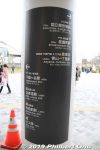
This shows how far each train/subway station is.
|
|
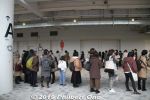
Long line for the women's restroom on the ground floor. There are men's and women's restrooms on each floor. If the line is too long, just look for another one.
|
|
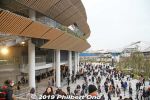
It was the first time the stadium saw this many people.
|
|
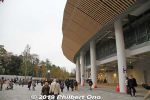
I walked completely around the stadium on the ground level outside.
|
|
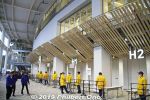
Each gate had a bag checkpoint.
|
|
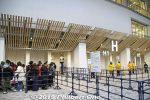
Line to enter Gate H.
|
|
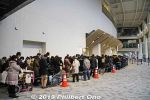
Line to enter Gate H.
|
|
|
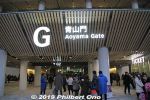
Gate G, Aoyama Gate
|
|
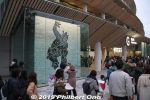
Near Gate G, a large, fresco mosaic wall mural of Nomi no Sukune, a legendary sumo wrestler posing as a victor. By pioneering artist Hasegawa Roka (長谷川路可 1897–1967). This was preserved and moved here from the old National Stadium. So this work dates from 1964. 「野見宿禰」
|
|

Mosaic wall mural of Nomi no Sukune, a legendary sumo wrestler posing as a victor. By pioneering artist Hasegawa Roka (長谷川路可 1897–1967).
|
|
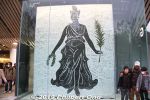
Another fresco mosaic wall mural by Hasegawa Roka. The Greek Goddess of Victory, depicting "Honor." This was preserved and moved here from the old National Stadium. 「勝利の女神」
|
|
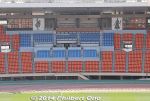
This is where Hasegawa Roka's pair of fresco wall murals were in the old National Stadium's main stand. Saw it in May 2014 when I toured the old 1964 Olympic Stadium before it was torn down to make way for the new stadium.
|
|
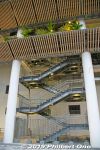
Looks like fire escape stairs, but they are normally used to exit the stadium. It was closed while people were entering the stadium (using escalators). The stairs were opened after the event ended.
|
|
|
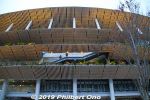
The stadium's design theme was "Forest Stadium." (杜のスタジアム). Lots of cedar lumber on the exterior. The wood came from all 47 prefectures and they point toward the place where they came from.
|
|
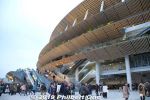
Stairs and escalator to the stadium's 2nd tier seats.
|
|
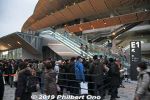
Stairs and escalator to the stadium's 2nd tier seats.
|
|
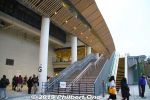
Stairs and escalator to the stadium's 2nd tier seats.
|
|
|
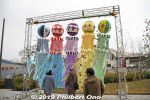
Tanabata streamers from Sendai, Miyagi Prefecture. One event highlight was Tohoku festivals.
|
|
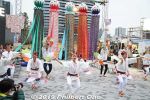
Outside Gate E, there was a short pre-event performance of the Sendai Suzume Odori dance from Sendai, Miyagi Prefecture. The Suzume Odori (Sparrow Dance) is held in late July near Sendai Station. They performed in front of Tanabata streamers for which Sendai is famous in early Aug. 仙台すずめ踊り http://www.suzume-odori.com/
|
|
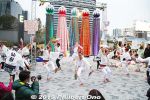
Sendai Suzume Odori dance. They were also going to be part of the main program inside the stadium. 仙台すずめ踊り http://www.suzume-odori.com/
|
|
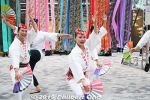
Sendai Suzume Odori dance.
|
|

Sendai Suzume Odori dance.
|
|
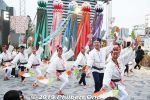
Sendai Suzume Odori dance.
|
|
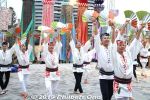
Sendai Suzume Odori dance.
|
|
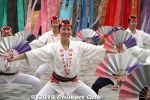
Sendai Suzume Odori dance.
|
|
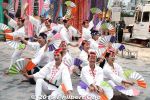
Sendai Suzume Odori dance.
|
|
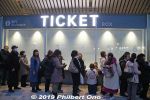
Stadium's ticket box office. It was closed since tickets to this event was sold in advance. First you had to apply for the ticket lottery online. If you won a ticket in the lottery (held at least 3 times), you could pay for it by credit card or at a convenience store. The ticket lottery and website were in Japanese only and geared for Japan residents with a cell phone. Very puzzling since it effectively shut out overseas visitors from buying a ticket. I didn't see any foreigners in the crowd. And yet, the event MC kept mentioning how it was for all nationalities, abled-bodied and disabled, all genders, all ages, etc., etc. No event info in English at all.
|
|
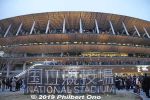
Popular photo spot with the "National Stadium" sign. Near Gaien Gate.
|
|
|
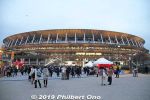
The stadium as seen from Gaien Gate. This area is where they had food stalls and corporate sponsor booths.
|
|
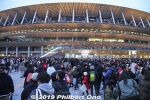
The stadium as seen from Gaien Gate.
|
|
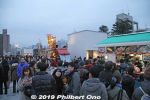
Food stalls.
|
|
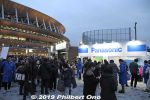
Corporate sponsor booths.
|
|

Gate B2.
|
|
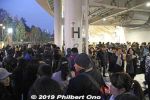
We all had reserved seating so there was no rush to get to our seats. But there was this long line for Gate A that led to seats on all three tiers (1st to 4th floors) in this section on the Main Stand. The line wound back and forth four times before we headed for Gate A.
|
|
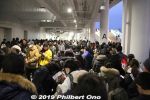
Long and winding line for Gate A.
|
|
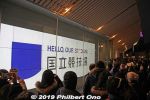
The line moved quickly though. It took about 15 min. to get to the gate to go inside.
|
|

Entering Gate A for security check of our bags. Notice that Gate A branches off into smaller gates from A1 to A6. A1 goes to the 1st floor, A6 goes to the 4th floor.
|
|
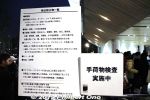
Items not allowed: Knives, scissors (longer than 5.5 cm), poison, illicit drugs, flammable things, flares, fireworks, firecrackers, explosive items, oil, hammers, screwdrivers, chains, ice picks, glass bottles, cans, canned goods, raw eggs, and more. Plastic (PET) bottle drinks are allowed, but it may be subject to inspection.
Even this sign was not in English. So I guess they weren't expecting foreigners to attend this event.
|
|

Gate A6 led to escalators going to the 4th floor. The admission ticket tells you which gate to go to.
|
|
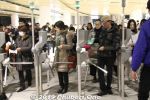
The turnstile used a QR code scanner. Show the QR code on your ticket and the turnstile unlocks for you to pass through.
|
|
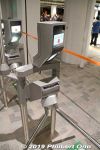
The turnstile scanner machine (spare ones here).
|
|
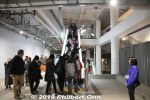
Escalator to the upper floors.
|
|
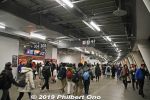
Concourse on the 4th floor. This is open-air. Quite cold this day.Concourse on the 4th floor. This is open-air. Quite cold this day. I felt sorry for the staff who were working here, standing outside the corridor entrance to the seats.
|
|
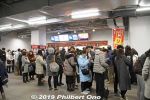
A number of concession stands along the concourse, but long lines. I brought my own food and drinks, so I didn't bother to stand in line. No vending machines in the stadium. The cheapest drinks were ¥300.
|
|
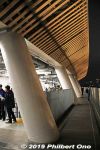
Outside the concourse.
|
|
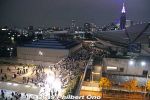
View outside the concourse, looking toward Tokyo Metropolitan Gymnasium and Sendagaya Station.
|
|
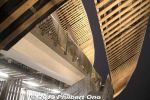
Stairs to the 5th floor where there is an open-air concourse with potted plants (Sora no Mori). But it was closed.
|
|
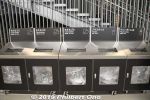
On the concourse, trash bins for burnables, plastics, and PET bottles.
|
|
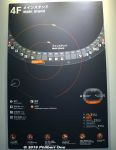
Layout of seating blocks on the Main Stand on the 4th floor (Tier 3). Notice the many concession stands and restrooms. It may be confusing to see three seating tiers, but they are on different floors. The 1st tier is on the 1st floor, the 2nd tier is on the 2nd and 3rd floors, and the 3rd tier is on the 4th and 5th floors.
|
|
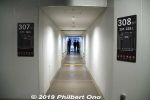
Narrow corridor to Blocks 307 and 308 on tier 3. No wheelchair seating here.
|
|
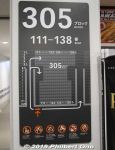
Layout of a block of seats. The block numbers indicate the tier. 100s for the 1st tier (expensive seats), 200s, for the 2nd tie, and 300s here for the 3rd tier (cheap seats, ¥5000 for this event). Here, you should check your seat No.
If your seat No. is 111 to 124, enter on the left side of the block. If it's 125 to 138, go to the other corridor entrance on the right side of the block. The field is toward the top of this diagram (Row 1).
|
|
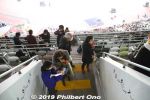
At the end of the corridor is steps going down and up. Cramped spot where people tend to stop and try to figure out which way to go. If your seat is on the other side of the block, you should go back to the concourse and enter the corridor on the other side of the block.
|
|
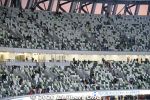
The seats have a random mosaic design in shades of green, brown, and white. It makes it look like there are spectators even when the seats are empty.
|
|
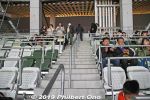
Third tier steps going up to the top row of the stadium. Above the top row is open-air. Steps are narrow and steep. Hold the hand rails.
|
|
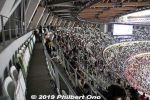
From the top row of seats in the stadium on the 3rd tier. Tier 3 has a steep 34˚ incline.The Tier 1 is more gradual at 20˚, and Tier 2 is 29˚. Lateral space was minimized, so it's quite cramped to move through the seats when people are sitting in them. And there's no walkway traversing the seating area on the cramped 3rd tier. Go back out to the concourse to move to another block.
The stadium was designed this way to keep the seats closer to the field. I must say, it is effective in that sense. The field looks closer and you get clear views with no heads in the way. In the old National Stadium, the top row was faraway from the field.
This top row is also right below the open-air part of the stadium and if it's windy and rainy, I would think people may get wet here. Must be cold in winter to sit here. But in summer, it might be cooler when there's a breeze.
|
|
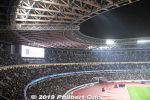
Spectator seating is pretty much covered by the roof, but windy rain can still reach people. The stadium was looking quite full.
|
|
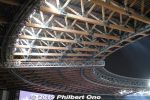
Roof laden with wood.
|
|
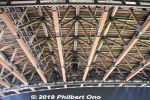
Awesome-looking roof. It also has loudspeakers.
|
|
|
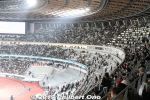
The 1st tier on the bottom has a gradual incline, the 2nd tier is steeper, and the 3rd tier is the steepest.
|
|
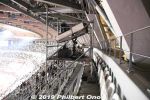
Spotlight fixture occupies three rows of 5 seats.
|
|
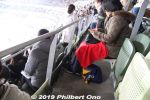
My row on the 3rd tier. Hardly any room for a person to pass in front of people sitting. Not good when someone wants to get out and I'm shooting video of a precious moment on the field.
|
|
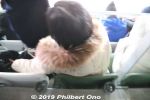
In front of me, this person's head was slightly above my knees when I was sitting. A little kid sitting can easily kick the person's head in front. The drink holder is also on the floor.
|
|
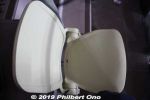
My seat, made of hard plastic.
|
|

We all got a free face towel as a souvenir.
|
|

Navigational map of the men's room. Mainly for visually impaired people, but I believe the braille is in Japanese.
|
|
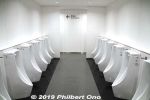
Men's room, very clean.
|
|

Semi-accessible toilet. (Too small for a wheelchair.) The wheelchair spaces had accessible toilets nearby.
|
|
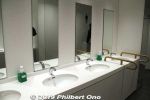
Wash basin.
|
|
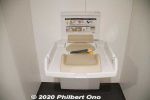
Diaper-changing table.
|
|
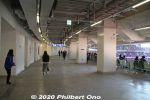
2nd tier concourse (3rd floor) does not have any crosswinds.
|
|

Comcession stand on 2nd tier concourse (3rd floor).
|
|
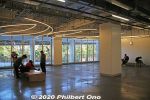
Extra space on 2nd tier concourse (3rd floor).
|
|
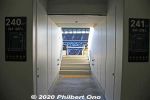
Corridor to 2nd tier seats.
|
|
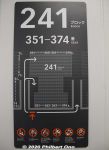
Map of a block of seats on 2nd tier. Each block has two corridors/entrances. Enter the corridor closest to your seat.
|
|
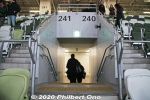
End of corridor to seats.
|
|
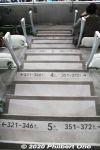
Row and seat numbers on steps on 2nd tier.
|
|
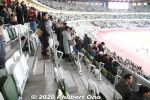
2nd tier seats, less steep than the 3rd tier.
|
|
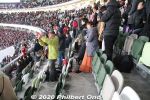
2nd tier seats.
|
|
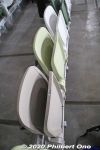
Seat numbers (without row number) are on the seat edge, not on the seat back. If there are people sitting, you cannot see the seat number.
|
|
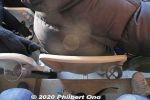
On 2nd tier, the incline is less than the 3rd tier. The drink holder is above the floor.
|
|
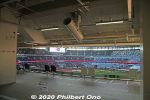
Wheelchair space on 2nd tier concourse. Seats are for abled-bodied wheelchair companions. This space also has power outlets for recharging power/electric wheelchairs. Mounted on the ceiling is a cooling fan.
|
|
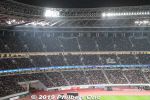
The stadium was looking quite full. The stadium capacity is 60,000, but they announced that attendance for this event was 52,000.
|
|
|
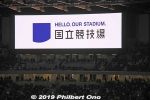
The name of the stadium's opening event was "Hello, Our Stadium." Two giant monitors were used to show live closeups of the performers.
|
|

It's an oval-shaped stadium with a track and field and partial, fixed roof. The track and field had taiko drums and kanto paper lantern poles on both ends.The seats have a random mosaic design in shades of green,
|
|
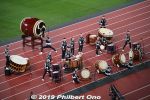
At 6:30 pm, the Opening Act was the famous taiko drum troupe Kodo from Sado, Niigata. 鼓童https://www.kodo.or.jp/en/
|
|
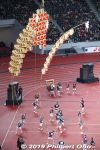
The culture part of the program featured a festival from each of the six prefectures in the Tohoku Region: Aomori, Akita, Yamagata, Miyagi, Iwate, and Fukushima Prefectures. They are all annual summer festivals. There's an emphasis on this region because it was where the March 2011 tsunami and earthquake hit Japan the hardest. The Japanese government also wants to call this the "Recovery Olympics."
|
|
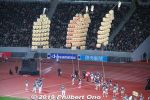
It started with the Kanto Festival from Akita Prefecture (same place where the Akita dog comes from). On both ends of the field, men in happi coats balanced tall paper lantern-bedecked bamboo poles, called kanto, on their shoulders, hand palms, or hips. These kanto symbolize rice plants. Akita Kanto Festival is held annually during Aug. 3 to 6 near JR Akita Station in Akita Prefecture. http://www.kantou.gr.jp/english/index.htm 竿灯まつり
|
|
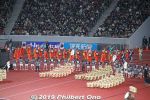
Next was the Morioka Sansa Odori dance festival from Morioka, Iwate Prefecture. It's a large-sacle evening street dance held near JR Morioka Station on Aug. 1 to 4. 盛岡さんさ踊り http://www.sansaodori.jp/foreign/english.php
|
|
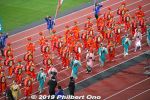
Morioka Sansa Odori Festival 盛岡さんさ踊り
|
|

Morioka Sansa Odori Festival 盛岡さんさ踊り
|
|
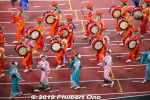
Morioka Sansa Odori Festival 盛岡さんさ踊り
|
|

From Yamagata Prefecture, Yamagata Hanagasa Matsuri, an evening dance festival held annually during Aug. 5 to 7. It's a flower hat (hanagasa) dance parade near JR Yamagata Station. 山形花笠まつり http://www.hanagasa.jp/en/
|
|

They danced along only part of the track. Yamagata Hanagasa Matsuri 山形花笠まつり
|
|

Yamagata Hanagasa Matsuri 山形花笠まつり
|
|
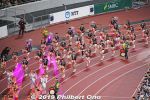
Yamagata Hanagasa Matsuri 山形花笠まつり
|
|

From Fukushima Prefecture, the Waraji Matsuri is mainly an evening parade of dancers wearing waraji straw sandals.Includes a giant golden waraji. Held on the first Fri. and Sat. of Aug. near Fukushima Station. 福島わらじまつり https://www.waraji.co.jp/
|
|
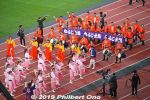
From Fukushima Prefecture, the Waraji Matsuri.
|
|
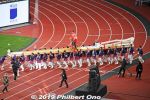
This supposed to be Japan's largest waraji straw sandal. It's an offering to pray for healthy legs/feet. Fukushima Waraji Matsuri 福島わらじまつり
|
|
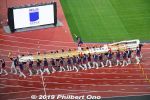
Japan's largest waraji straw sandal.
|
|
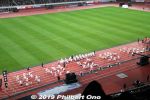
From Miyagi Prefecture, Sendai Suzume Odori dance which I saw earlier outside the stadium. Normally held in late July near Sendai Station. 仙台すずめ踊り http://www.suzume-odori.com/
|
|
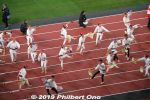
Sendai Suzume Odori dance
|
|

Sendai Suzume Odori dance
|
|
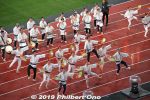
Sendai Suzume Odori dance
|
|
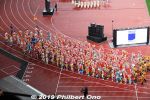
The last Tohoku festival was the Aomori Nebuta Matsuri. Held in the evenings during Aug. 2 to 7 near Aomori Station. ねぶた祭The Nebuta float is accompanied by dancers called haneto. They hop all over while shouting "Rasse, Rasse, Rassera!" These people came from Aomori and Tokyo. ねぶた祭
|
|
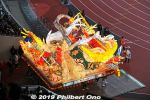
Nebuta floats are large wire-frame, paper lanterns shaped in various legendary and macho characters such as samurai warriors, demons, and gods. They are dramatically illuminated from the inside and paraded on the streets of Aomori city at night. They did not parade this big float on the track since it might damage the track. ねぶた祭
|
|
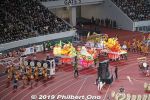
Tohoku summer festivals are conveniently held during the same period in early Aug. so you can see most of them during a single trip. Well worth it. Aomori Nebuta, Sendai Tanabata, and Akita Kanto are the Big Three. There's also the Neputa Matsuri in Hirosaki.
|
|
|
|
|
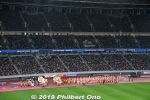
They paraded completely around the track.
|
|
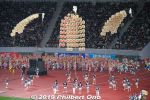
Aomori Nebuta Matsuri parading past Akita Kanto lanterns.
|
|
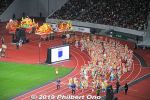
Aomori Nebuta Matsuri paraded completely around the track.
|
|
|
|
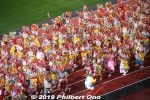
The Nebuta float is accompanied by dancers called haneto. They hop all over while shouting "Rasse, Rasse, Rassera!" ねぶた祭
|
|
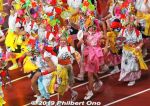
The Nebuta float is accompanied by dancers called haneto. They hop all over while shouting "Rasse, Rasse, Rassera!" ねぶた祭
|
|
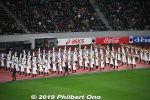
Some marching bands and other people appeared.
|
|
|
|
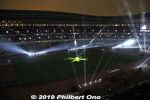
The stadium went dark with a spotlight on the field...
|
|

Pro soccer/football player Miura Kazuyoshi appeared and said a few words. He also played with the ball and kicked it into the crowd. The lucky guy in the stand who caught the ball got to keep the ball autographed by Kazu. 三浦 知良
|
|

Another spotlight was on three members of Japan's national rugby team. In the middle is team captain Michael Leitch who thanked the crowd for their support during the Rugby World Cup.
|
|
|
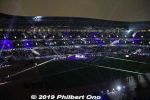
Finally, the program moved to the music portion.Headlining a string of mini concerts was J-pop group Dreams Come True. ドリームズ・カム・トゥルー
|
|
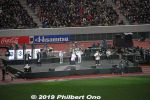
With lead singer Yoshida Miwa, Dreams Come True performed a few numbers for about 20 min. They once performed at the old National Stadium. So I guess that's why they were selected to perform here. ドリームズ・カム・トゥルー https://dreamscometrue.com/
|
|
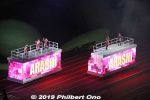
Next was boy group Arashi first appearing on trucks that moved to the stage on the field. 嵐
|
|
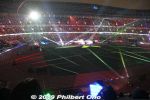
Arashi on stage. The stadium is so big, so everyone looked tiny. 嵐
|
|

Arashi on stage. 嵐
|
|

The opening event's sports highlight was the "One Race" featuring Olympians and Paralympians, both male and female. It was a relay race of four teams with six runners each. Two teams (Red and Green) represented Japan. The other two teams (Orange and Blue) represented the world. The world teams had only two runners each in the stadium. The remaining four runners would run in Los Angeles or Paris in real time. Each runner was to run 200 meters. https://ourstadium.jpnsport.go.jp/onerace/
|
|
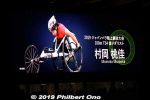
Starting on the Green Team was Muraoka Momoka. 村岡桃佳
|
|
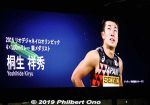
Anchoring the Green Team was Kiryu Yoshihide. 桐生祥秀
|
|
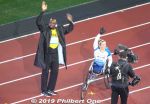
Usain Bolt was the anchor on the Blue Team with four starting runners in Paris. So we saw only he and Hannah Cockroft in the stadium.
|
|

Usain Bolt runs to his position on the track. It was a cold evening so the runners wore overcoats before the race.
|
|

Kiryu Yoshihide's team is introduced.
|
|
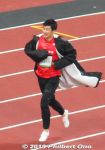
Kiryu Yoshihide runs to his position on the track. 桐生祥秀
|
|
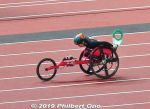
Muraoka Momoka starts for the Green Team. 村岡桃佳
|
|
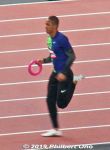
Cambridge Aska starts off his relay team.
|
|
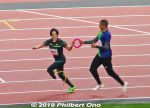
On the Red Team, Cambridge Aska passes the round baton to Takakuwa Saki. ケンブリッジ 飛鳥 髙桑早生
|
|
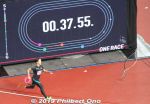
Takakuwa Saki 髙桑早生
|
|
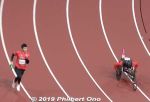
Anchor Kiryu Yoshihide and Suzuki Tomoki 桐生祥秀 鈴木朋樹
|
|

Anchors Marlou van Rhijn and Usain Bolt.
|
|
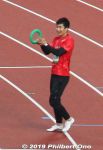
Kiryu Yoshihide, who had finished, applauds Usain Bolt and others crossing the finish. For us spectators, it was hard to see and understand what was going on
|
|

The runners celebrate on the podium.
|
|
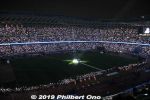
Next, the stadium went dark and the MC asked everyone to turn on their cell phone flashlight. There was one more thing... Spotlight on a surprise...
|
|
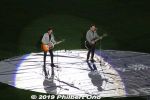
J-pop duo Yuzu appeared as an unannounced, surprise guest performer. They sang "Eiko no Kakehashi." 栄光の架橋
|
|
|
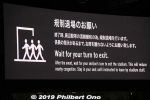
People in my block didn't heed this request. As soon as they said "This concludes today's program," we all up and left the stadium via the stairs. Got out in no time.
|
|
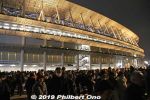
Leaving the stadium. Glad it was over. It was cold.
|
|
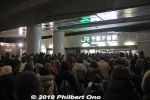
Large crowd heading to Sendagaya Station, but it went smoothly and trains came often. My next visit to the this stadium will be on New Year's Day for a national soccer/football final game.
|
|
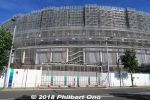
Passed by the Olympic Stadium in June 2018 when it was still under construction.
|
|
|
|
|
|
|
|
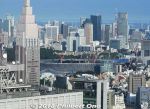
View of the Olympic Stadium in July 2018 from the Tokyo Metropolitan Government Building.
|
|
|
|
|
|
|